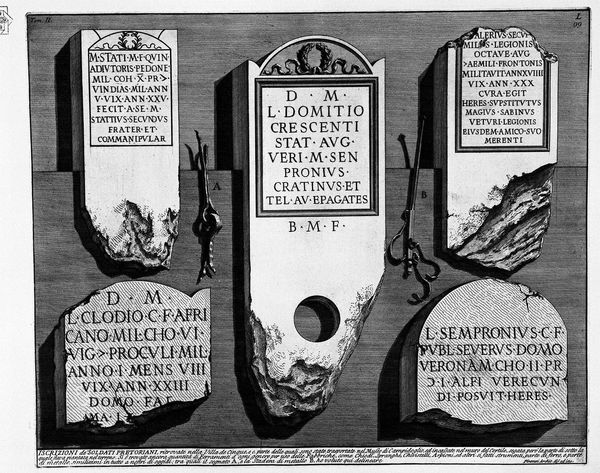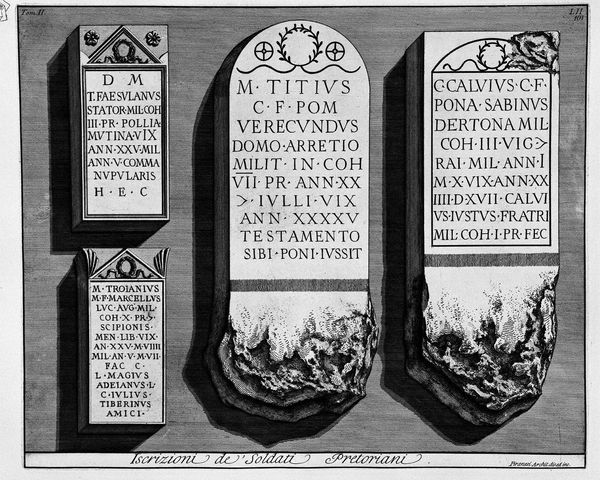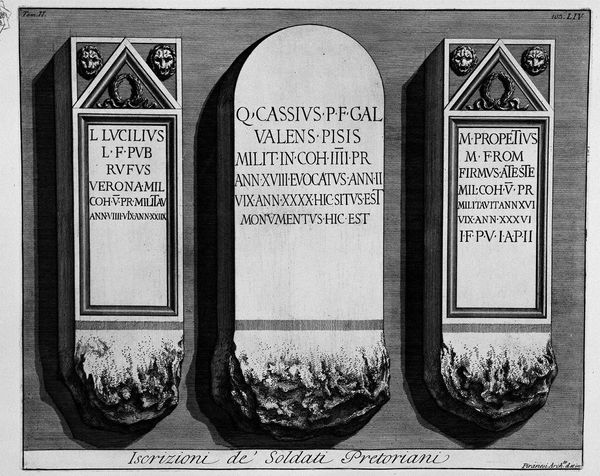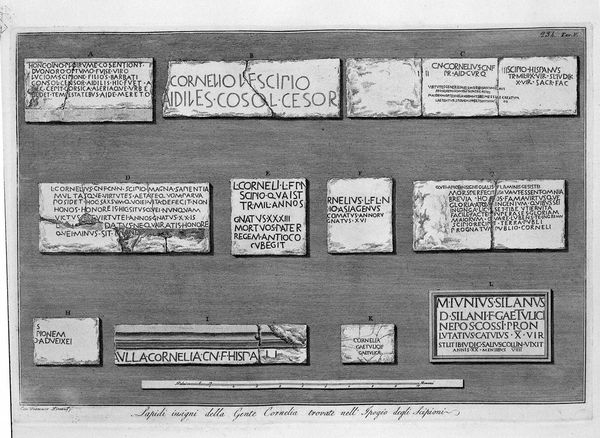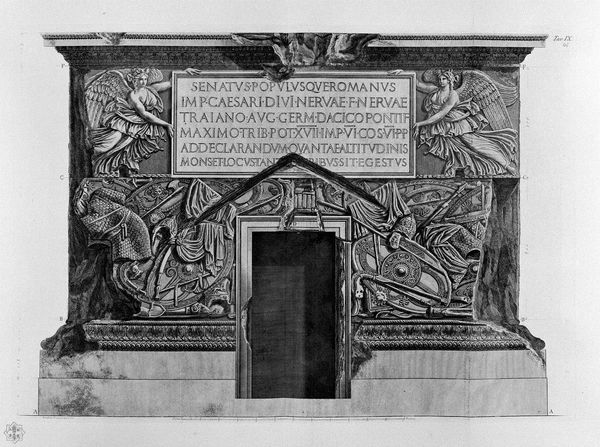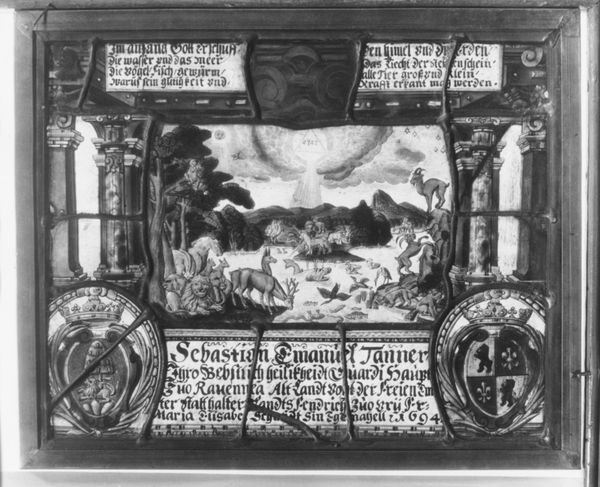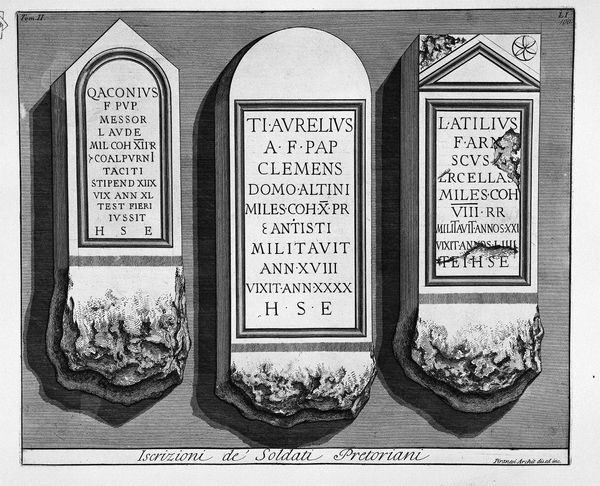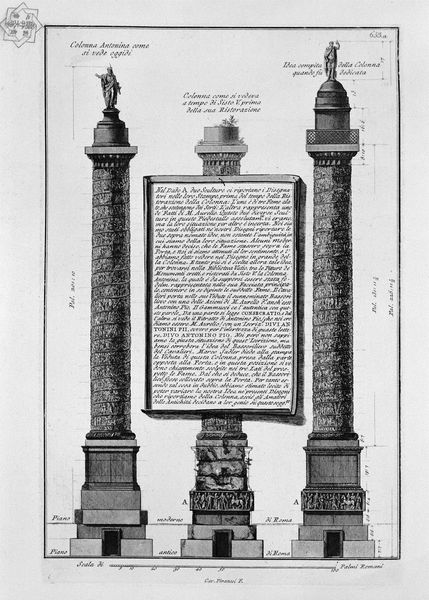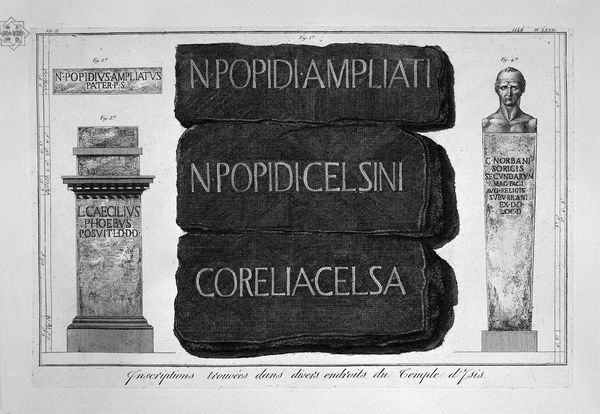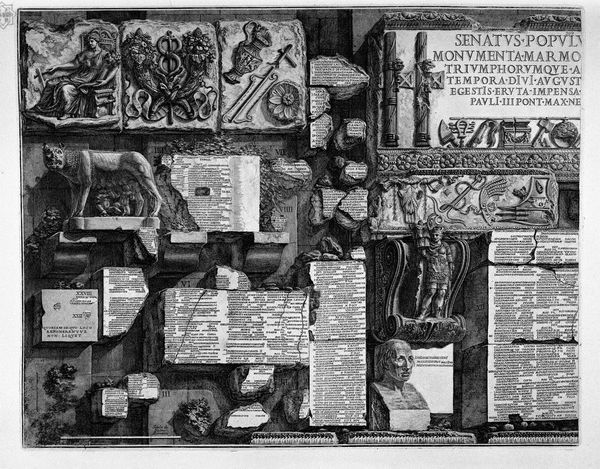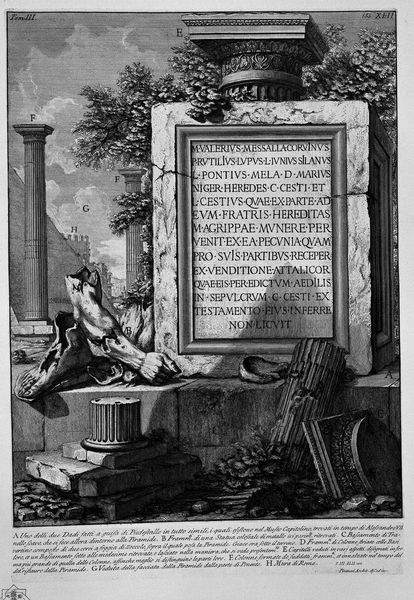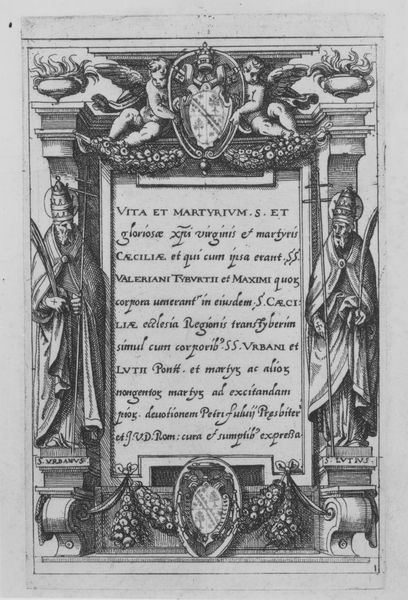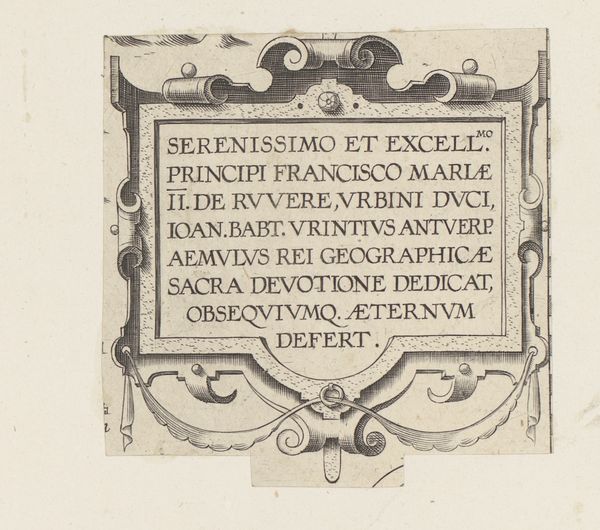
The Roman antiquities, t. 3, Plate XI. Membership of the Mausoleum of the Family in Ponte de Plauzij Lugano.
0:00
0:00
drawing, print, paper, engraving, architecture
#
drawing
# print
#
paper
#
romanesque
#
ancient-mediterranean
#
carved
#
history-painting
#
engraving
#
architecture
#
calligraphy
#
statue
Copyright: Public domain
This print by Giovanni Battista Piranesi, dating back to the 18th century, presents a collection of fragmented Roman inscriptions, each a silent witness to the past. These stones, marked with the wear of centuries, bear witness to Roman lives. The inscriptions, with their precise lettering, speak of honors, family ties, and civic achievements. One cannot help but notice the recurrence of names, a testament to lineage and legacy. The term 'ornamenta' suggests not just decoration, but symbols of status, a visual language of power and recognition. Consider the act of inscription itself—a desire to leave a mark, to defy oblivion. Across cultures, from ancient Egypt to the Renaissance, we see this impulse to immortalize oneself through stone and script. It is as if these Romans, like figures in a dream, are reaching out across time, their stories echoing in our collective memory. A potent psychological force to connect with our ancestry engaging viewers on a deep, subconscious level. This cyclical return to classical forms reveals a yearning for a perceived golden age, a recurring theme in Western art, demonstrating how symbols can be continually re-imagined through the ages.
Comments
No comments
Be the first to comment and join the conversation on the ultimate creative platform.
